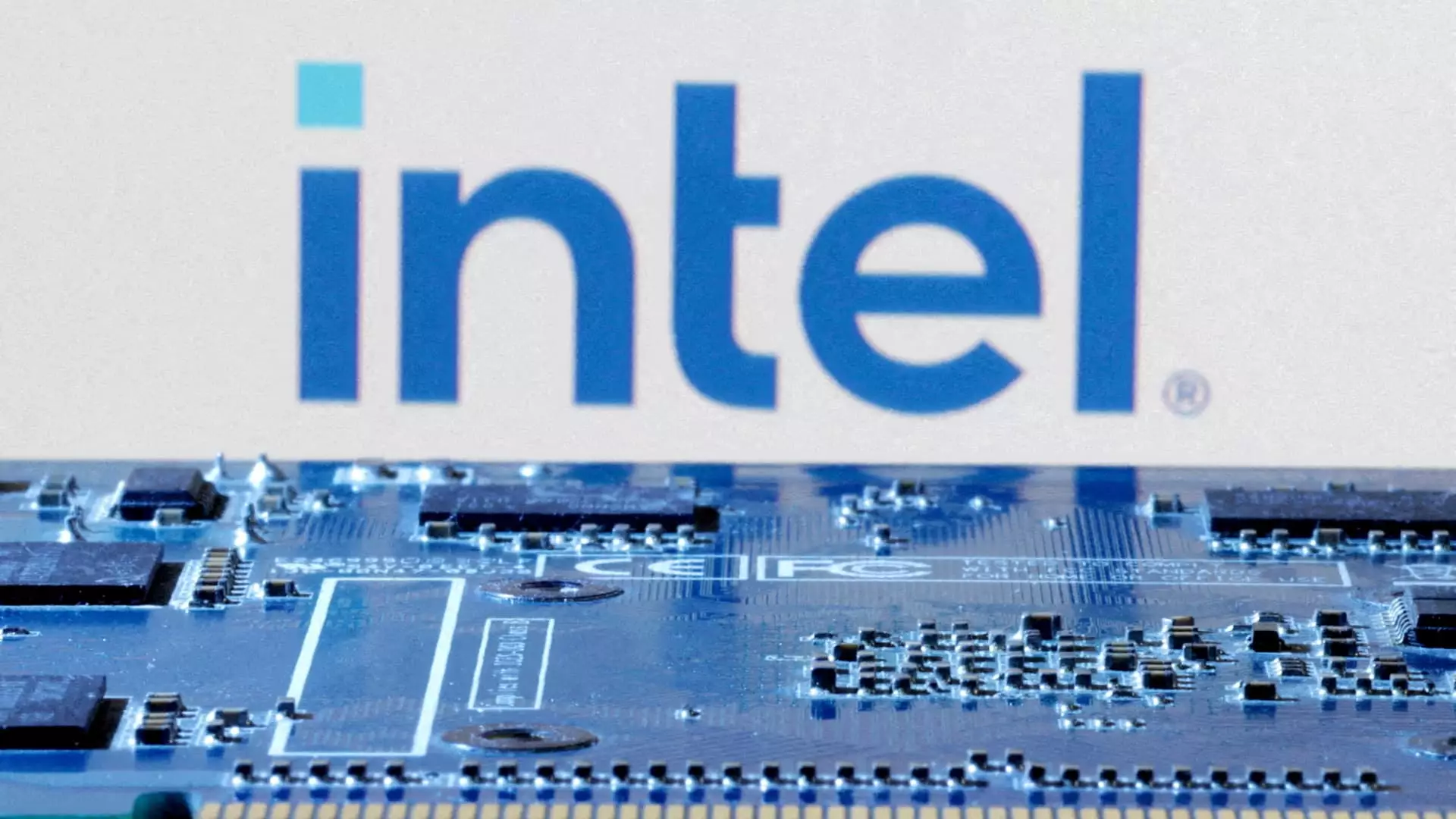The financial world often thrives on anticipating change, and this was precisely illustrated by Intel’s recent appointment of Lip-Bu Tan as CEO. The stock surged by a remarkable 10% following this announcement, showcasing that markets often react positively to new leadership, especially when it comes with a distinguished pedigree like Tan’s. His prior role as CEO of Cadence Design Systems marks him as a formidable player in the tech domain. This is a resounding wake-up call for investors: the ability of a company to rebound can hinge on its leadership. There is potent symbolism in this surge, suggesting that the stock market is not merely ruled by numbers but deeply influenced by psychological shifts—faith in new leadership acting as a decisive catalyst for growth. This exemplifies the critical need for investors to not only analyze quarterly earnings reports but also to weigh the human factor behind executive decisions.
UiPath’s Revenue Miss: An Alarming Red Flag
On the opposite end, UiPath’s damning report—a staggering 18% decline in shares—highlights a harsh reality in the volatile technology sector. The software company’s earnings lagged well behind Wall Street expectations, impressively illustrating how quickly fortunes can change. Reports of $424 million in revenue are jaw-dropping given that it does not just indicate a shortfall, but signals a potential crisis in investor confidence. To predict the trajectory of any company in the current unpredictable market, investment strategies must consider not only past performance but emerging trends and virtual realities. GuiPath’s underperformance is a stark reminder that navigating these waters necessitates a discerning gaze and bold strategies. This company’s hallowed reputation now hangs precariously, and leaving it unquestioned could prove disastrous for investors looking for the next big tech darling.
Adobe’s Lackluster Future: A Cautionary Tale for Creative Enterprises
As Adobe takes its seat at the gloomy table of underperformers, the tech titan’s shares dipped by 6%, reflecting unease in the creative technology sector. With a forecasted earning of no more than $5 per share, Adobe’s projection misses the mark that stakeholders had built expectations around. This is even more concerning as it reflects broader economic trends in consumer spending and corporate investment in technology. Adobe’s case is a cautionary tale, eminently salient to the larger tech narrative. When giants stumble, it invariably sends shockwaves through the market. With successive declines, a lingering question emerges: is it a sign of the times, or simply mismanagement? Investors would do well to consider not just direct ramifications on earnings but also the socio-economic conditions impacting consumer trust in creative platforms.
The Technological Ecosystem: Cybersecurity Concerns
Likewise, SentinelOne’s more than 13% drop following a disappointing revenue forecast exposes a concerning vulnerability in the cybersecurity arena—a sector many viewed as insulated from economic tumbles. With anticipations of revenue falling short at $228 million, the alarm bells should resonate universally within the tech investment community. The cybersecurity sector is crucial for safeguarding digital futures, yet even stalwarts can falter under financial scrutiny. The underwhelming projections by SentinelOne embody the duality of the tech market—one laden with risk but brimming with opportunities for those willing to engage deeply.
Retail Woes: Turning a Frugal Eye on American Eagle Outfitters
In retail, the case of American Eagle Outfitters falling 9% paints a grim picture of consumer demand. Despite an earnings beat in previous quarters, declining sales forecasts starkly contrast with initial optimism. Expectations of a mid-single-digit drop are alarming within a landscape recovering from profound economic upheaval. Retailers must innovate not merely in products but in engagements with their clientele. Such drops suggest profound shifts in consumer habits that could take years to recalibrate. As investors closely monitor these trends, advocating for resilience and foresight is now paramount.
Deft Moves in the Stock Market: One Constant Among Uncertainties
In the midst of these erratic movements, there are also stories of triumph, as evidenced by Dollar General’s robust share increase by 6.9%. The company outdid analyst expectations, revealing the merits of frugality during uncertain economic times. This unexpected growth amid challenges reinforces the notion that discount retailers may thrive even as other sectors falter. Financial landscapes are ever-evolving, but investment acumen will always lean towards identifying enduring business models that appeal to consumer prudence.
A Strategic Vision for the Future
Navigating through these stock shifts requires more than a surface-level glance—it demands deep strategic thinking. Investors must cultivate a keen understanding of leadership impacts, sector-specific dynamics, and changing consumer preferences, all while maintaining an agile approach to adapt to a tumultuous economic environment. The financial world is never boring, and amid successes and failures, the core lesson remains: investing in thoughtful strategies backed by astute analysis and adaptability will ultimately yield the most lucrative results.

